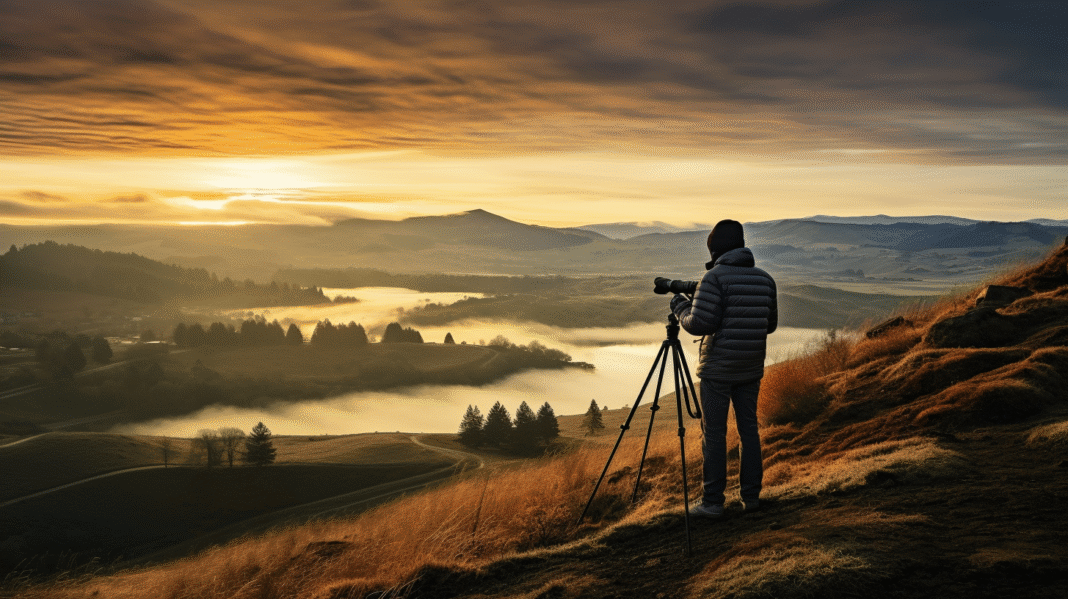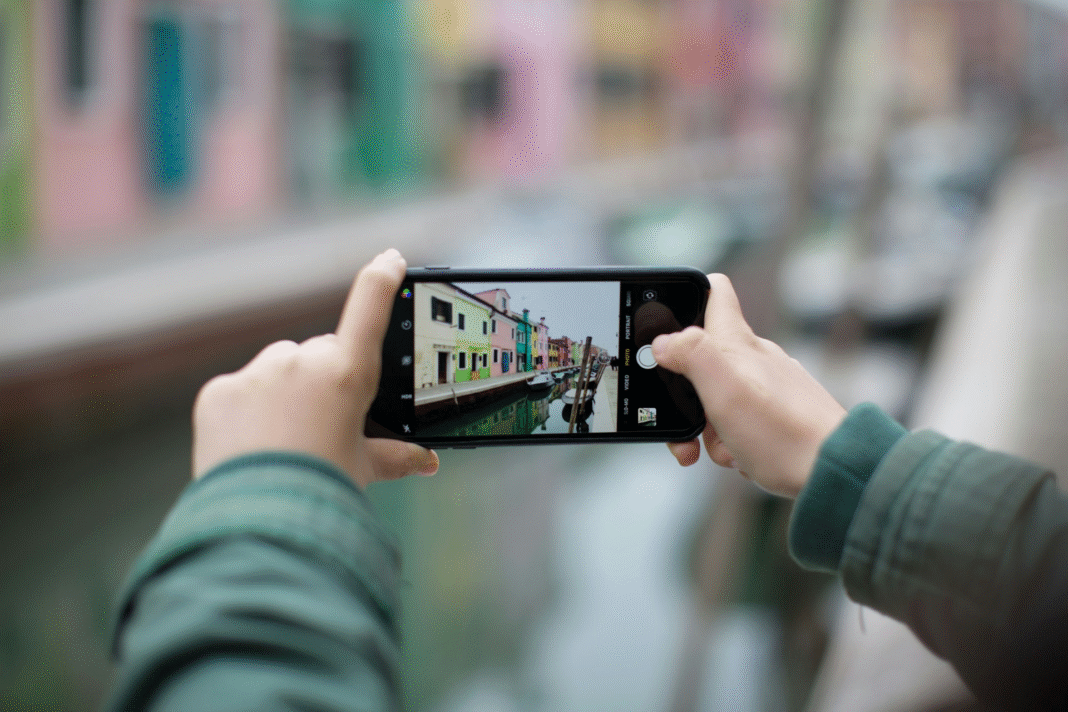Landscape photography is one of the most rewarding styles of photography. Capturing the beauty of mountains, forests, oceans, or even a city skyline allows you to share the world as you see it. But while it may seem simple—point the camera at a beautiful view and click—the truth is that good landscape photography requires patience, practice, and a strong eye for detail.
Whether you’re a beginner with a smartphone or an enthusiast with a DSLR, improving your landscape photography skills can help you transform ordinary shots into breathtaking masterpieces. Let’s dive into some practical tips that can take your photos to the next level.
1. Understand the Light
Light is the most important element in photography. In landscape shots, it sets the mood and tone. Shooting at the wrong time of day can make even the most beautiful places look flat or dull.
- Golden Hour: The first hour after sunrise and the last hour before sunset are the best times for landscapes. The warm, soft light adds depth and makes colors pop.
- Blue Hour: The time just before sunrise or after sunset, when the sky has a soft blue glow, creates a dreamy atmosphere.
- Avoid Harsh Midday Sun: Direct sunlight overhead can wash out colors and create harsh shadows. If you must shoot at noon, look for shaded areas or use filters.
2. Use the Rule of Thirds
Composition is key in landscape photography. The rule of thirds divides your frame into nine equal parts with two vertical and two horizontal lines. Place your main subject (like a mountain, tree, or sunset) along these lines or at their intersections.
This technique prevents your photo from looking too centered or flat, creating a natural balance that feels pleasing to the eye. Most cameras and smartphones even have a grid option you can turn on to help with this.
3. Find a Strong Foreground Element
While landscapes are often about the background—mountains, skies, or oceans—a strong foreground element adds depth. For example:
- A rock, flower, or fallen log in the foreground.
- A winding path or river leading the eye into the scene.
- A person looking into the distance.
Foregrounds guide the viewer’s eye through your photo and make it more engaging.
4. Use a Tripod for Sharpness
Sharp images are crucial in landscapes. A tripod eliminates camera shake, especially in low light when your shutter speed slows down. It also allows you to experiment with long exposures, like capturing silky waterfalls or smooth ocean waves.
Even a small, lightweight travel tripod can make a big difference in your photography.
5. Experiment with Different Perspectives
Don’t just shoot from eye level. Change your perspective:
- Go low: Shooting from ground level makes flowers, grass, or rocks look dramatic.
- Climb higher: Shoot from a hill, tower, or drone for a wide view.
- Try wide-angle lenses: They capture more of the scene, making landscapes appear vast and immersive.
A fresh angle can turn an ordinary location into a masterpiece.
6. Pay Attention to Weather and Atmosphere
Many beginners only shoot when the weather is clear. But dramatic skies, fog, storms, or misty mornings can add magic to your photos. A cloudy sky, for example, gives texture and mood, while rain can bring reflections and richer colors.
Don’t be afraid of “bad weather”—it often creates the most stunning landscapes.
7. Master Long Exposure Shots
Long exposure is a powerful tool in landscape photography. By keeping the shutter open for a few seconds, you can:
- Turn rushing rivers into silky streams.
- Capture moving clouds that streak across the sky.
- Make night scenes with stars more magical.
For this, you’ll need a tripod and, ideally, a neutral density (ND) filter to control the amount of light entering your lens.
8. Focus on Leading Lines
Leading lines naturally guide the viewer’s eyes through the photo. Roads, fences, rivers, or trails are great examples. Place them in your composition so they lead toward your main subject, creating depth and flow in your image.
9. Shoot in RAW Format
If your camera allows it, shoot in RAW instead of JPEG. RAW files capture more detail and give you greater flexibility when editing. You can adjust exposure, colors, and shadows without losing image quality.
Smartphones now also offer RAW capture, so even mobile photographers can take advantage of this.
10. Edit Your Photos Thoughtfully
Editing is part of modern photography, but the goal is to enhance, not overdo. Use editing software like Lightroom, Photoshop, or Snapseed (for mobile) to:
- Adjust exposure and contrast.
- Bring out natural colors without oversaturating.
- Sharpen details and reduce noise.
Remember: subtle edits usually make photos look more professional.
11. Be Patient and Return to Locations
Great landscape photos often come from patience. Sometimes the light isn’t right, or the weather doesn’t cooperate. Don’t get discouraged—return to the same spot at different times of the day or season. You’ll often be surprised by how different and stunning the results can be.
12. Practice Storytelling
A great landscape photo doesn’t just show scenery—it tells a story. Ask yourself: what mood do I want to capture? Is it peaceful, dramatic, mysterious, or adventurous? Use composition, light, and subjects to share that feeling with the viewer.
Conclusion
Improving your landscape photography skills is a journey of practice, patience, and creativity. By mastering light, composition, perspective, and editing, you can turn simple scenes into breathtaking works of art. Remember, the best landscapes are not just about the place but about how you capture and present it.
So grab your camera—or even your phone—head outdoors, and start experimenting. Every photo you take brings you closer to mastering the craft.
FAQs
1. What camera is best for landscape photography?
DSLRs and mirrorless cameras are ideal because of their flexibility and image quality. However, modern smartphones with good cameras can also capture excellent landscape shots.
2. Do I need expensive gear to take good landscape photos?
Not at all. While high-quality lenses and tripods help, composition, lighting, and creativity matter much more than expensive gear.
3. How can I make my landscape photos stand out?
Focus on unique perspectives, use strong foregrounds, capture mood with lighting, and edit subtly. Storytelling also makes your photos memorable.
4. Should I travel far for good landscapes?
Not always. Stunning landscapes can be found near your home. The key is learning how to see beauty in everyday places and capturing it creatively.
5. How important is editing in landscape photography?
Editing is important to bring out the best in your photo, but it should enhance, not completely change the image. Subtle adjustments usually look more natural.




